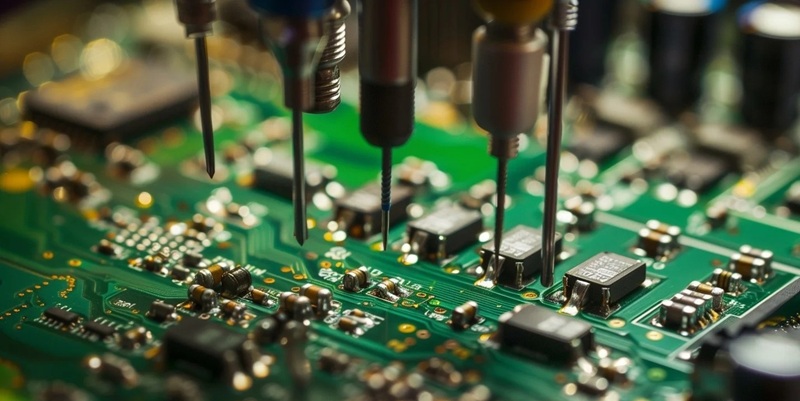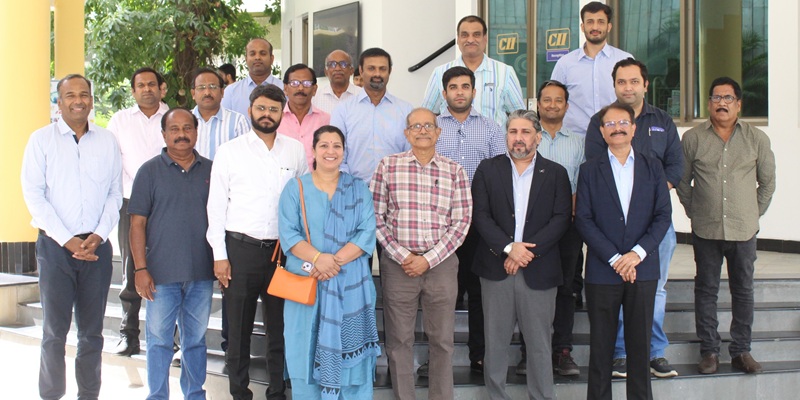Schedule a Call Back
The New Industrial Revolution
 Technical Articles
Technical Articles- Sep 07,12
Many of us are all too familiar with situations when entire production lines have to be stopped due to the malfunctioning or breakdown of a small part. What's worse, the part isn't in the inventory, and ordering, shipping, replacing and recalibration often takes a considerable amount of time. Also, lost production time isn't really a good thing to report to the bosses. Such situations are helpless as one can't really pre-empt equipment failure no matter how much preventive maintenance is carried out. But, thanks to newer technologies, long downtimes may soon become a thing of the past. In fact, it may even herald a new industrial revolution.

The technology in question here and now. It is called Additive Manufacturing (AM), or simply 3D printing. Unlike traditional printing, 3D printing involves depositing layers of material, on top of each other to make three-dimensional objects. The material used can be anything from thermoplastics, metal powders, plaster, paper, Titanium alloys, to even bio-active materials. While the so called "inks" are different, the 3D printing process in itself is not too different from the traditional CAD/CAM process.

First, a computer model of the object to be made is designed on a CAD system. This model is then logically divided into thin layers. The thinness of the layers depends on the finish one wants and the kind of the material being used. This design is sent to the 3D printing device, which then lays down successive layers of liquid, powder, or sheet material. These layers are then joined together, or fused automatically to create the desired object. Besides the increased versatility of making almost any kind of feature or a geometric shape, material wastage is minimised to a large extent. But that isn't all, the time-to-fabricate using additive manufacturing techniques is substantially lesser than subtractive or other techniques.
While researchers believe that we are still a few years, maybe decades away from labgrown organs, the artificial urinary bladder is already a reality. To create an artificial bladder, first, a CT scan of the patient is taken to determine the shape of the bladder. Next a healthy tissue sample from the patients own bladder is selected and grown over a balloon-like biodegradable scaffold made according to the CT scan.
Even at a nascent stage, the applications of 3D printing are wide. While doctors and medical experts are trying to print entire organs, engineers have successfully printed three dimensional circuits involving difficult materials like graphene. Using special techniques called building entire 2,500 sq-ft houses built layer by layer using concrete and automatic reinforcement are just around the corner. The US Patent and Trademarks Office already has filed patents for hybrid rocket-engines that print their own fuel. And if that is not enough, there are also 3D printers that can print their own parts, probably making them the first machines that can replicate themselves.

Markus Kayser, a student at the Royal College of Art in England has built a 3D printer that harnesses the sand and the sun in the desert to create glass objects like bowls, plates and sculptures. The device is powered using photovoltaic cells that capture solar energy, which is used to move and manipulate the object. Printing is done through a glass ball fresnel lens that focuses the sun's rays to heat sand to a point where it melts. This zapping, known as sintering, is carried out layer-by-layer based on pre-specified coordinates. Once the molten sand solidifies into the desired shape, the object is removed. Of course, the finished object doesn't compare to what one can get straight off the market, primarily because variables like the quality of sand in the desert and the intensity of the sun cannot be controlled, but, what Kayser's project demonstrates is that automated manufacturing can be done anywhere - even in places where there is little or no access to energy. In the University of Southern California's Information Sciences Institute, Prof Behrokh Khoshnevis is busy developing a construction process called "Contour Crafting". It uses a computer-controlled crane and gantry to build single storey civil structures without using any manual labour at all. Using a quick-setting concrete-like material, contour crafting makes the house's walls layer-by-layer. The walls are later topped of by floors and ceilings set in place by crane. The system can even set other structural components like plumbing, wiring and utilities at the same time as the walls are being built. Originally conceived as a method to construct moulds for industrial parts, Prof Khoshnevis readapted the technology for construction, as a way to rebuild homes rapidly after natural disasters. According to Prof Khoshnevis, a 2,500 square-foot house can be built in under 21 hours. Because there is little wastage and little human intervention housing can become affordable again. NASA is evaluating Contour Crafting for its application in the construction of bases on Mars and the Moon.
The San Francisco-based start-up, BeSpoke Innovations is replicating designer human-body parts such as prosthetic limbs, at a fraction of their previous cost. Colorado-based LGM employs 3D printing to create scale models of buildings and resorts for architectural firms. While Amsterdam-based Freedom of Creation prints iPhone cases, as well as exotic furniture and fixtures for hotels and restaurants. Iris van Herpen, a prominent fashion designer who has designed for Lady Gaga and Bj?rk, is already using 3D printing to print clothes. The TIME Magazine even names Iris van Herpen's 3D printed dresses one of the 50 Best Inventions of 2011.
One-off prototypes and objects can be hideously expensive to produce, but a 3D printer can bring down the cost substantially. Audi, the German luxury carmaker is already using 3D printing not only to prototype, but to build important parts that actually go into production cars. 3D printing not only allows businesses like Audi to prototype and test new ideas and designs and bring innovative products to market faster than ever before, it also allows them to adapt to changing market requirements and tastes easily. 3D printing will democratise manufacturing as it brings even greater kinds and numbers of materials under its ambit.
Jeff Kowalsky, the CTO of Autodesk, in a recent Forbes interview said, "Manufacturing is probably going to be more localised than it has been. We won't be shipping as many raw materials around the world, producing things in lower-cost labour areas then sending it back. If manufacturing the actual production of something is effectively free, and more importantly, complexity is free, that can be performed locally."
As the number of people directly employed in making things declines, the cost of labour as a proportion of the total cost of production will come down too. Simply put, this will encourage makers to move some of the work back to rich countries, because newer manufacturing techniques like 3D printing will make it cheaper and faster to respond to changing local tastes. Colin Smith, director of engineering and technology for Rolls-Royce, a British company that makes jet-engines, cars and other power systems says, "The days of huge factories full of lots of people are not there any more."

Our current ways of manufacturing focuses on cost-effectiveness by targeting economies-of-scale. However, this may no longer be viable when distribution costs go up as oil and energy prices rise. In such scenarios, 3D printing holds a lot of promise. Rather than transport and distribute entire machinery, parts and widgets; it will be beneficial to transfer just the idea codified in drawings, designs and software, and let the 3D printer do the rest locally.
3D printing will challenge the not so customer-friendly "one size fits all" ideology bridled by limitations of assembly-line manufacturing. Companies will soon be in a position, or perhaps be even forced by competition, to offer products that are far more customisable. The industry will be forced to shift from "mass manufacturing" to "mass customisation". Think of extremely comfortable shoes that are made exactingly to match the shape of your feet versus those that are simply mass manufactured, which would you prefer? As 3D printing becomes cheaper and more accessible, it may even allow you to print your own things. The era of "Desktop Manufacturing" isn't far. All you'll need to do is buy the design and manufacturing can happen at your home or office. Sounds too futuristic? Such a store for designs for a class of 3D printers called "Maker Bot" already exists and can be accessed at thingiverse.com. From plastic gears to table lamps, Thingiverse is already revolutionising the DIY space.
In the coming future, 3D printing and digitisation in manufacturing will have a very disruptive effect comparable to how megapixels made the once mighty Kodak redundant. However, the disruption will not be confined to large manufacturers alone.
They will need to watch out because much of what is coming will empower small and medium-sized firms and individual entrepreneurs. For the first time, a designer who thinks he can do better will also be to manufacture, at costs large players won't be able to match.
(Amol Hatwar is a Partner at Exceed Consulting where he helps businesses solve difficult technology problems. He can be reached at amol.hatwar@exceed.co.in)
Related Products

Ozone System
Omnicorp Environs & Infratech Co offers a wide range of ozone systems.

SWR ’Slipping’ Wrenches
Reliable
Trade Links offers a wide range of SWR ’slipping’ wrenches.

Gripping Systems – Rgg
Schunk Intec India Pvt Ltd offers a wide range of Gripping Systems – RGG - cleaning
device with shank interface.















